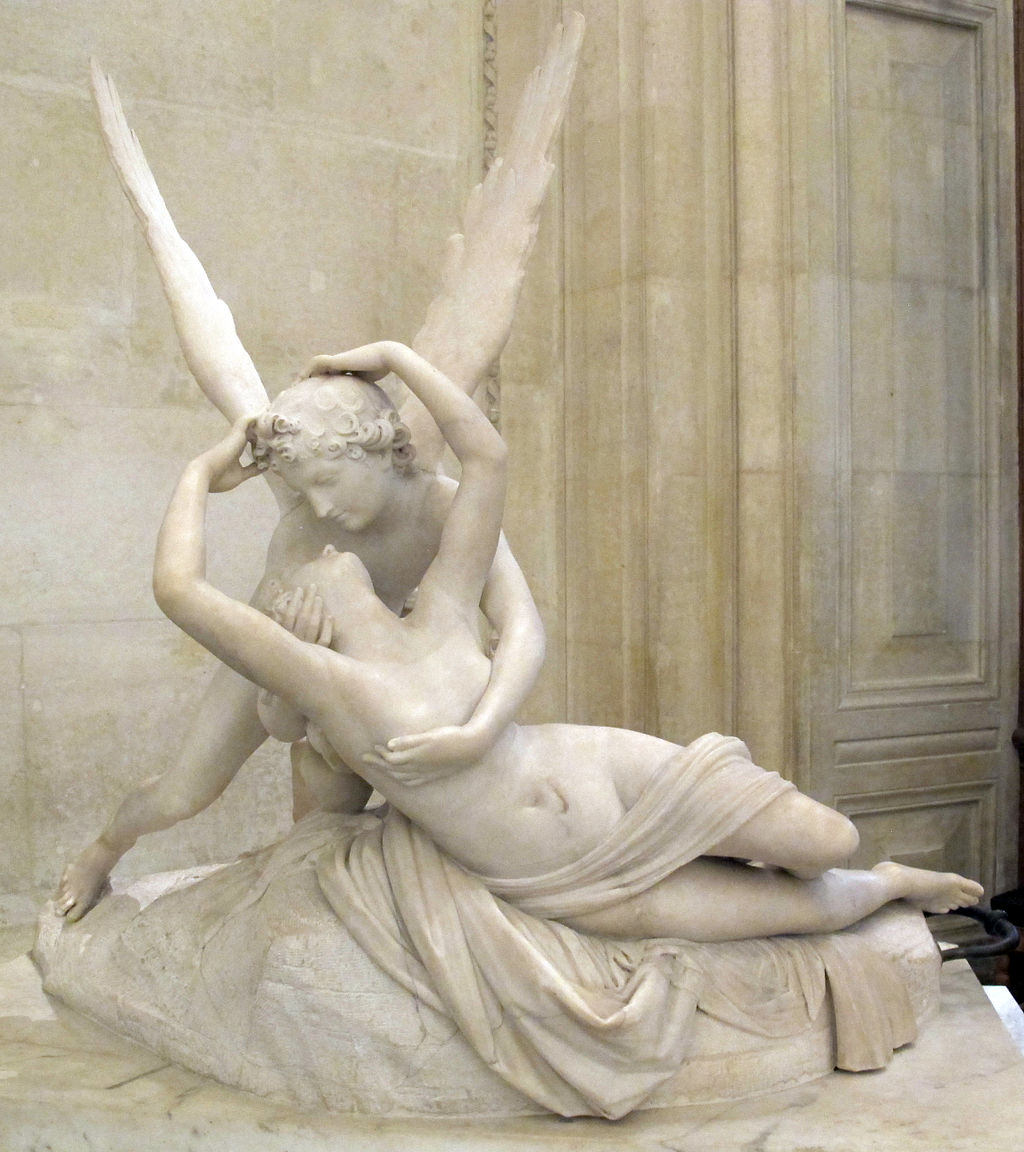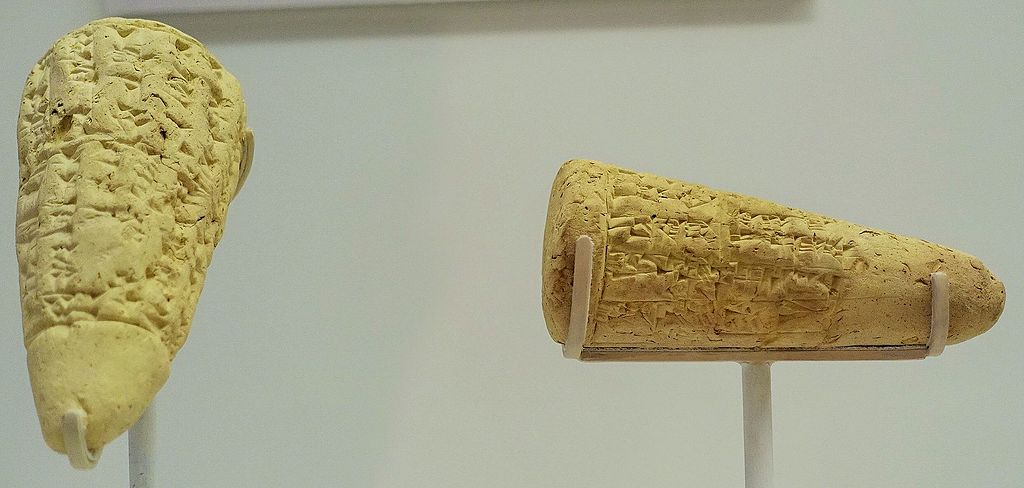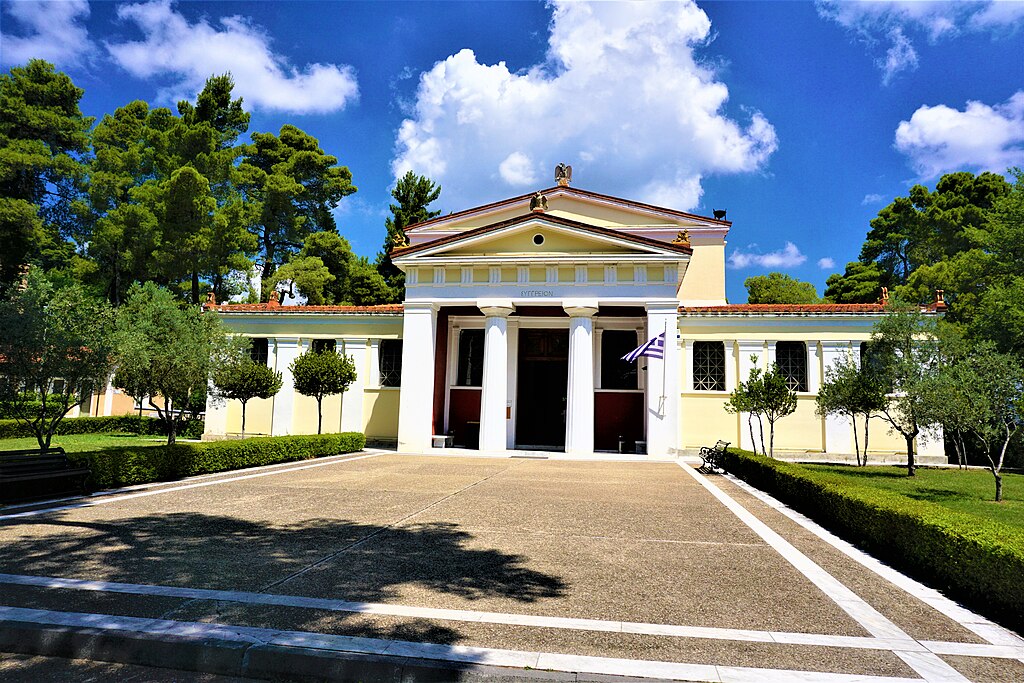
“The Money Changer and His Wife” by Quentin Matsys depicts a man weighing the jewels and pieces of gold at a table. His wife sits next to him, distract from her book.
The couple is not dressed as members of the nobility but rather as well-to-do citizens of Antwerp, where the painting was made.
At the time, Antwerp had grown in population with the influx of many southern immigrants fleeing the Spanish Inquisition.
There was a demand for money-changers and moneylenders among this international community, as international commerce was increasing in the port city.
The wife is turning a page in the religious devotion book to illustrate the Virgin and Child.
Quentin Matsys has incorporated many details in the background reflecting the life of a prosperous burgher of Antwerp.
The shelf includes a fruit, books and manuscripts, a decorated puter plate, and trade tools. At the top right through the open door, we can see two neighbors gossiping. In the foreground are the standard weights and their specially made container.
On the bottom left is a decorated glass carafe with a lid and metal trimmings. In the center is a mirror reflecting the window.
The screen outside is shown in fascinating detail, and there is also a reflection of the artist. By painting his image reflected in the mirror, Massys echos this device’s use by Jan van Eyck in The Arnolfini Marriage of 1434.
Matsys displays his considerable skill as a portrait painter in this 1514 oil on panel painting. He has skillfully exhibited his ability to capture the highly personal and individual characteristics that reflect his realism technique.
While this painting can be enjoyed as a masterpiece of art, depicting an emerging respectable occupation, most art historians see moral and satirical meanings.
If this painting is a moral work, it is condemning avarice and exalting honesty. This meaning is symbolized by the Christian symbols of the book with Virgin and Child and the scales representative of the Last Judgment.
The snuffed-out candle and the fruit on the shelf are an allusion to original sin and death symbols. The carafe of water and the rosary hanging from the shelf symbolize faith and purity.
The shiny gold pearls are a symbol of lust, and the jewelry has distracted the wife from her spiritual reading. Have the objects in the background been carefully chosen to strengthen the work’s moral message?
Antwerp
The city of Antwerp, at the time of this painting, was growing in importance. This growth was due to the silting-up of the Zwin, a tidal inlet, which caused the decline of Bruges as it lost access to the North Sea.
At the end of the 15th century, most foreign trading houses transferred from Bruges to Antwerp. Antwerp became the sugar capital of Europe, importing the raw commodity from Portuguese and Spanish plantations.
The city attracted Italian and German sugar refiners by 1550 and shipped their refined products to Germany, especially Cologne.
Moneylenders and financiers developed a significant new business lending money all over Europe, including the English government in 1544–1574.
London bankers were too small to operate on that scale, and Antwerp had a highly efficient bourse that attracted wealthy bankers from around Europe. After the 1570s, the city’s banking business declined, and England ended its borrowing in Antwerp in 1574.
Money Changer
A money changer was a person whose business is the exchange of coins or currency of one country for that of another.
This trade was a predecessor of modern banking. During the Middle Ages in Europe, many cities and towns issued their own coins, often carrying a ruler’s face, such as the regional baron or bishop.
When outsiders, especially traveling merchants, visited towns for a market fair, exchanging foreign coins for local ones at local money changers became necessary.
Money changers would assess a foreign coin for its type, wear, and tear, and validity, then accept it as a deposit, recording its value in local currency. The merchant could then withdraw the money in local currency to conduct a trade.
Quentin Matsys
Quentin Massys (1466–1530) was a Flemish painter in the Early Netherlandish tradition and the Antwerp school founder.
Matsys was active in Antwerp for over 20 years, creating numerous works with religious roots and satirical tendencies.
“The Moneylender and his Wife” is one of his most famous works and an early example of the genre painting which would flourish in Flanders and the northern Netherlands over the 16th century.
The Money Changer and His Wife
- Title: The Money Changer and His Wife
- Artist: Quentin Matsys
- Year: 1514
- Material: Oil on panel
- Dimensions: Height: 70.5 cm (27.7 ″); Width: 67 cm (26.3 ″)
- Museum: Louvre
Quentin Matsys
- Artist: Quentin Matsys
- Dutch: Quinten Matsijs
- Born: 1466, Leuven, Belgium
- Died: 1530 (aged 64), Antwerp
- Nationality: Flemish (Belgian)
- Movement Antwerp School
- Notable works:
- The Money Changer and His Wife
The money changer with his wife by Quentin Metsys – The hidden Symbols in the Arts
Explore the Louvre Paintings
- The Mona Lisa” by Leonardo da Vinci
- “Ruggiero Freeing Angelica” by Jean-Auguste-Dominique Ingres
- “The Valpinçon Bather” by Jean-Auguste-Dominique Ingres
- “The Turkish Bath” by Jean-Auguste-Dominique Ingres
- “Grande Odalisque” by Jean-Auguste-Dominique Ingres
- “Perseus and Andromeda” by Joachim Wtewael
- Self-portrait with Her Daughter, Julie by Louise Élisabeth Vigée Le Brun
- “The Virgin and Child with St. Anne” by Leonardo da Vinci
- “Louis XIV of France” by Hyacinthe Rigaud
- “The Massacre at Chios” by Eugène Delacroix
- “The Battle of San Romano” by Paolo Uccello
- “Virgin of the Rocks” by Leonardo da Vinci
- “The Death of Sardanapalus” by Eugène Delacroix
- “Psyche Revived by Cupid’s Kiss” by Antonio Canova
- “Liberty Leading the People” by Eugène Delacroix
- “The Arcadian Shepherds” by Nicolas Poussin
- “The Lacemaker” by Johannes Vermeer
- “The Money Changer and His Wife” by Quentin Matsys
Massys Moneychanger and His Wife
~~~
“Thanks to art, instead of seeing one world, our own, we see it multiplied, and as many original artists as there are, so many worlds are at our disposal, differing more widely from each other than those who roll around the infinite and which, whether their name be Rembrandt or Vermeer, send us their unique rays many centuries after the hearth from which they emanate is extinguished.”
– Marcel Proust
~~~
Photo Credit: Quentin Matsys [Public domain]
Popular this Week








 Sponsor your Favorite Page
Sponsor your Favorite Page SEARCH Search for: Search Follow UsJoin – The JOM Membership Program
Sponsor a Masterpiece with YOUR NAME CHOICE for $5
Share this:
- Tweet
